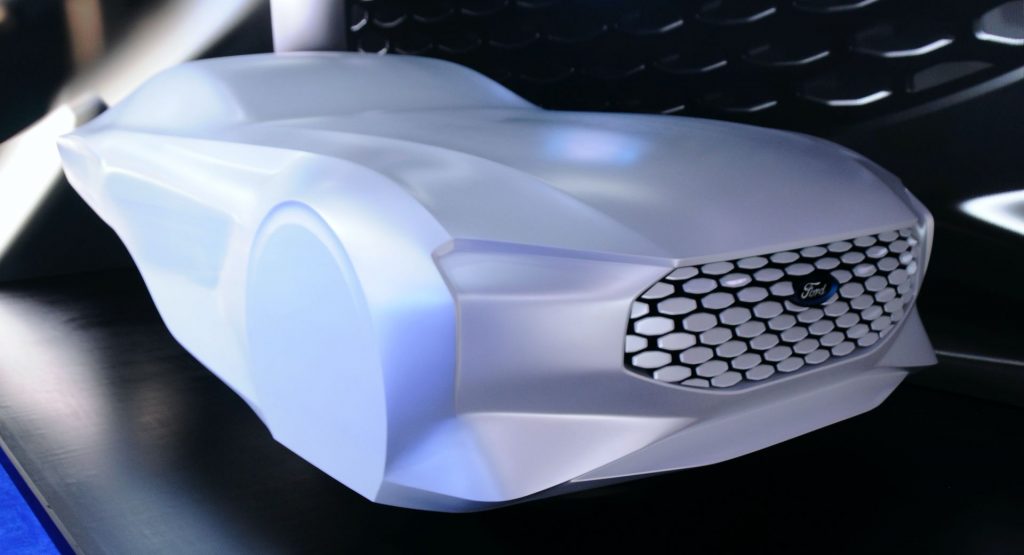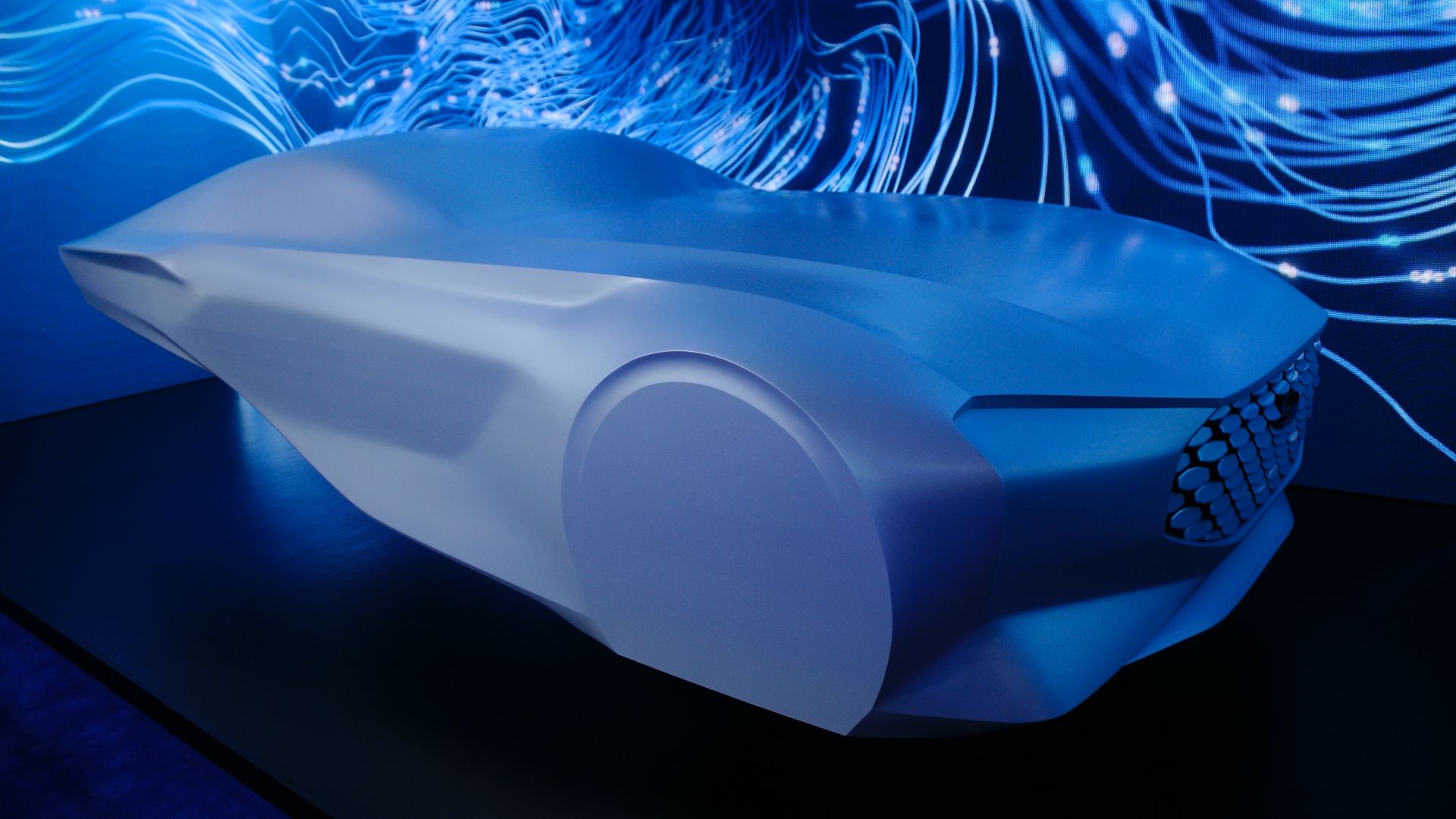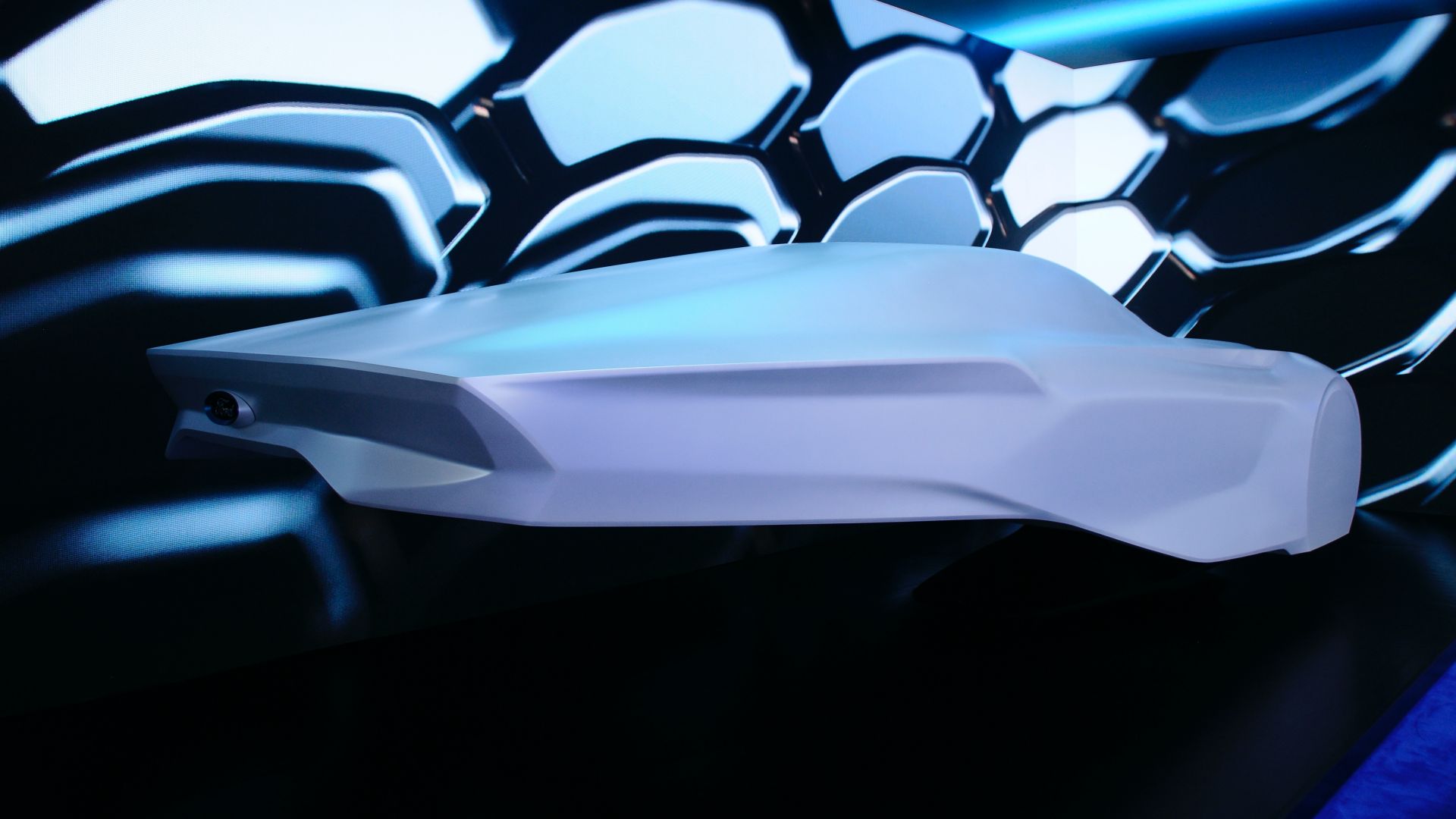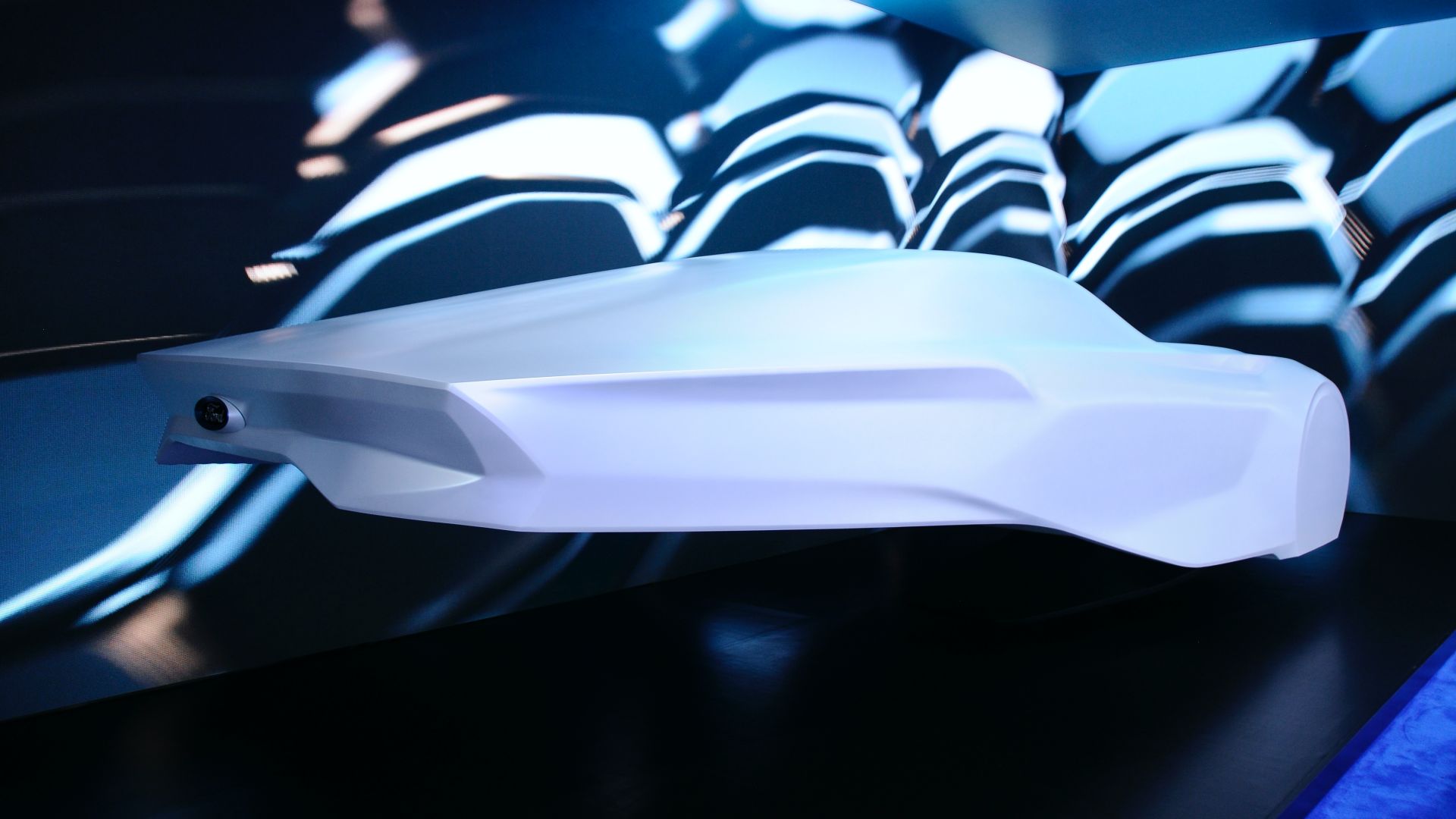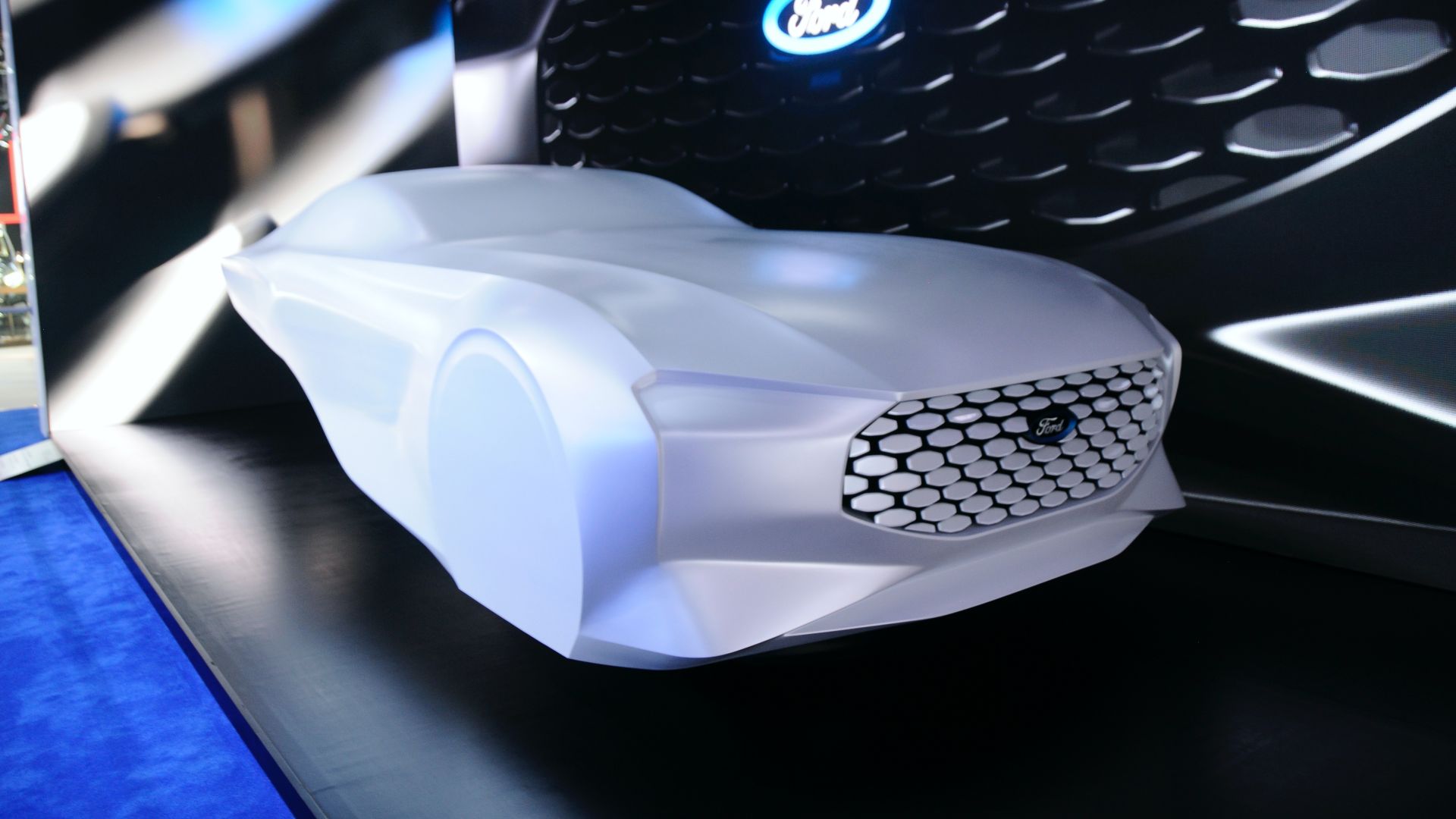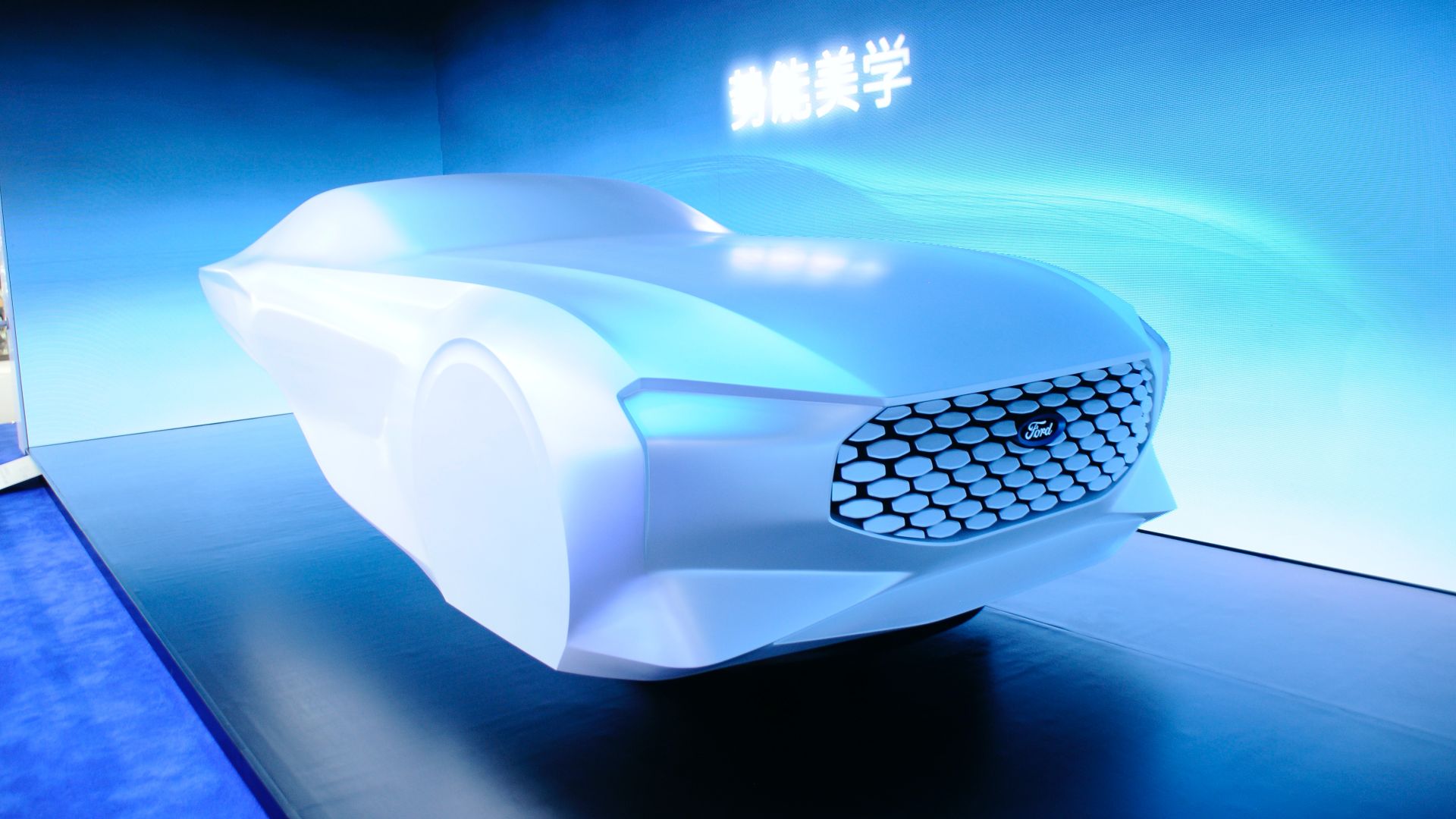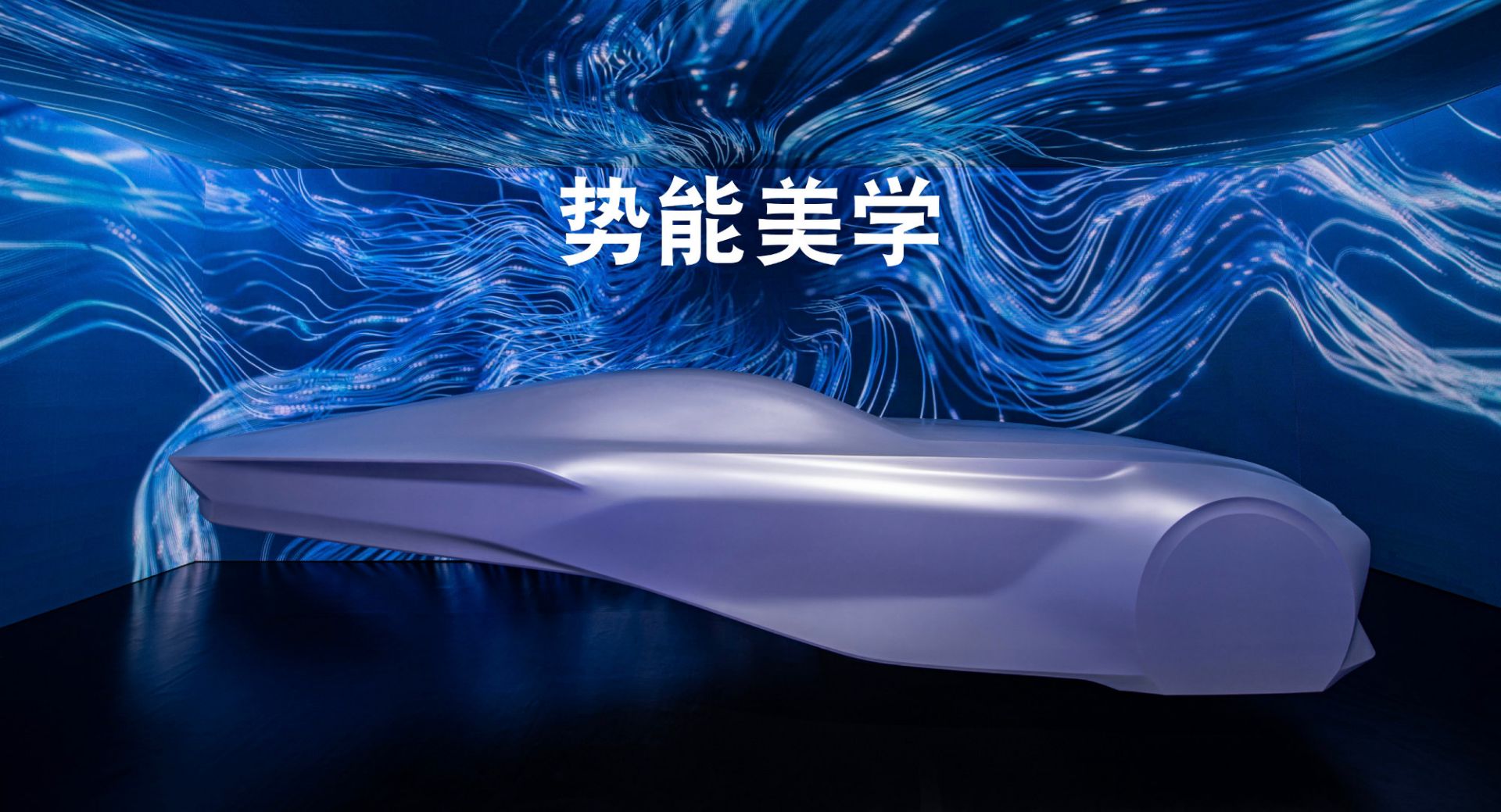The star of Ford’s 2020 Beijing Auto Show booth is undoubtedly the Mustang Mach-E EV which will launch in China in 2021.
Nevertheless, the stand also features a very interesting art installation that may have a lot to do with the next-generation Mustang sports car. Officially, the design sculpture is said to showcase Ford China’s next-generation design language “Progressive Energy In Strength”.
While Ford makes no mention of the design study having anything to do with the next-generation Mustang, the pony car is the first vehicle that springs to mind when looking at it. The slender yet athletic silhouette is clearly that of a fastback coupe, while the front end looks like an evolution of the current Mustang.
Read Also: Next Ford Mustang Could Use Explorer Platform, Pack Hybrid V8 And AWD
The horizontal headlights look angrier, though, and the larger grille adopts a different shape. The automaker says the installation “demonstrates a pioneering design with Chinese aesthetics and interprets Ford’s future product design direction from the commanding, responsive and agile dimensions.”
According to Ford, the flowing silhouette highlights the brand’s interpretation of speed, power and details. “The speedy shoulder lines and sleek body shape create a dynamic surface flow, surging and agile without losing its poise, leaning forward with progressive energy,” the carmaker says in the press release, adding that “the spacious and powerful underbody conveys strong forward propulsion.”
A highlight of the design sculpture is the parametric octagon scales graphic design grille, which employs parameter design and a matrix arrangement setting off the Ford logo. The angle of each piece is unique and the shape is reflected in the octagonal grille shape, which is “an artistic interpretation of Ford’s innovative spirit.” The shape of the grille and the details remind a lot of the China-spec Ford Escape launched last year.
Ford says the “Progressive Energy in Strength” design language will be brought to life by its new China Design Center, which will be established in October 2020 and will gather talented Chinese designers.



